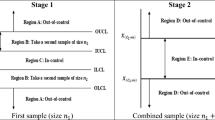Abstract
For a multi-stage stochastic programming problem, one approach is to explore a scenario tree based formulation for the problem and solve the formulation efficiently. There has been significant research progress on how to generate scenario trees in the literature. However, there is limited work on analyzing the computational complexity of the scenario-tree based formulation that considers the number of tree nodes as the input size. In this paper, we use stochastic lot-sizing problems as examples to study the computational complexity issues for the scenario-tree based formulations. We develop production path properties and a general dynamic programming framework based on these properties. The dynamic programming framework allows us to show that the optimal value function is piecewise linear and continuous, which enables us to develop polynomial time algorithms for several different problems, including those with backlogging and varying capacities under certain conditions. As special cases, we develop polynomial time algorithms that run in \({\mathcal{O}(n^2)}\) and \({\mathcal{O}(n^2T\,{\rm log}\,n)}\) times, respectively for stochastic uncapacitated and constant capacitated lot-sizing problems with backlogging, regardless of the scenario tree structure.
Similar content being viewed by others
References
Aggarwal A., Park J.K.: Improved algorithms for economic lot size problems. Oper. Res. 41, 549–571 (1993)
Ahmed S., Sahinidis N.V.: An approximation scheme for stochastic integer programs arising in capacity expansion. Oper. Res. 51, 461–471 (2003)
Atamtürk A., Kücükyavuz S.: An O(n 2) algorithm for lot sizing with inventory bounds and fixed costs. Oper. Res. Lett. 36, 297–299 (2008)
Belvaux G., Wolsey L.A.: bc − prod: a specialized branch–and–cut system for lot-sizing problems. Manage. Sci. 46, 724–738 (2000)
Belvaux G., Wolsey L.A.: Modelling practical lot–sizing problems as mixed integer programs. Manage. Sci. 47, 993–1007 (2001)
Beraldi P., Ruszczyński A.: A branch and bound method for stochastic integer problems under probabilistic constraints. Optim. Met. Softw. 17, 359–382 (2002)
Bitran G.R., Yanasse H.H.: Computational-complexity of the capacitated lot size problem. Manage. Sci. 28, 1174–1186 (1982)
Federgruen A., Tzur M.: A simple forward algorithm to solve general dynamic lot sizing models with n periods in \({\mathcal{O}(n\,{\rm log}\,n)}\) or \({\mathcal{O}(n)}\) time. Manage. Sci. 37, 909–925 (1991)
Federgruen A., Tzur M.: The dynamic lot-sizing model with backlogging-a simple \({\mathcal{O}(n\,{\rm log}\,n)}\) algorithm and minimal forecast horizon procedure. Nav. Res. Logist. 40, 459–478 (1993)
Florian M., Klein M.: Deterministic production planning with concave costs and capacity constraints. Manage. Sci. 18, 12–20 (1971)
Guan Y., Miller A.J.: Polynomial time algorithms for stochastic uncapacitated lot-sizing problems. Oper. Res. 56, 1172–1183 (2008)
Huang K., Ahmed S.: The value of multistage stochastic programming in capacity planning under uncertainty. Oper. Res. 57(4), 893–904 (2009)
Huang K., Kücükyavuz S.: On stochastic lot-sizing problems with random lead times. Oper. Res. Lett. 36, 303–308 (2008)
Lee C.Y., Cetinkaya S., Wagelmans A.: A dynamic lot-sizing model with demand time windows. Manage. Sci. 47, 1384–1395 (2001)
Lulli G., Sen S.: A branch-and-price algorithm for multi-stage stochastic integer programming with application to stochastic batch-sizing problems. Manage. Sci. 50, 786–796 (2004)
Ruszczyński, A., Shapiro, A., (eds.): Stochastic Programming. Handbooks in Operations Research and Management Science, vol. 10. Elsevier Science B. V., Amsterdam (2003)
Scarf, H.: The optimality of (s, S) policies for the dynamic inventory problem. In: Proceedings of the First Stanford Symposium of Mathematical Methods in the Social Sciences. Stanford University Press, Stanford, CA (1960)
Stadtler H.: Multi-level lot-sizing with setup times and multiple constrained resources: Internally rolling schedules with lot-sizing windows. Oper. Res. 51, 487–502 (2003)
Tempelmeier H., Derstroff M.: A Lagrangean–based heuristic for dynamic multi-level multi-item constrained lot-sizing with setup times. Manage. Sci. 42, 738–757 (1996)
van Hoesel C.P.M., Wagelmans A.: An \({\mathcal{O}(T^3)}\) algorithm for the economic lot-sizing problem with constant capacities. Manage. Sci. 42, 142–150 (1996)
Wagelmans A., van Hoesel A., Kolen A.: Economic lot sizing: an \({\mathcal{O}(n\,{\rm log}\,n)}\) algorithm that runs in linear time in the Wagner–Whitin case. Oper. Res. 40, 145–156 (1992)
Wagner H.M., Whitin T.M.: Dynamic version of the economic lot size model. Manage. Sci. 5, 89–96 (1958)
Author information
Authors and Affiliations
Corresponding author
Rights and permissions
About this article
Cite this article
Guan, Y. Stochastic lot-sizing with backlogging: computational complexity analysis. J Glob Optim 49, 651–678 (2011). https://doi.org/10.1007/s10898-010-9555-3
Received:
Accepted:
Published:
Issue Date:
DOI: https://doi.org/10.1007/s10898-010-9555-3




